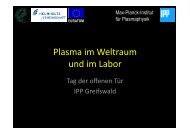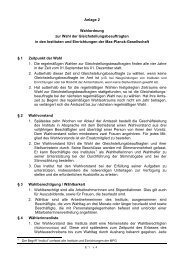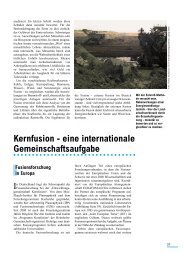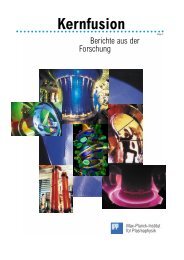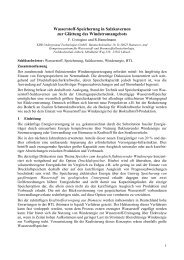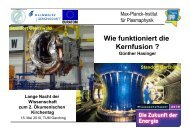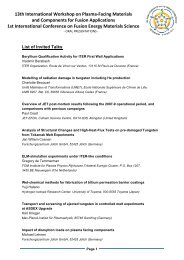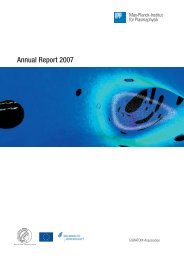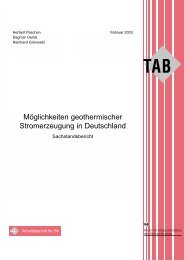Wendelstein 7-X and fusion - Max-Planck-Institut für Plasmaphysik
Wendelstein 7-X and fusion - Max-Planck-Institut für Plasmaphysik
Wendelstein 7-X and fusion - Max-Planck-Institut für Plasmaphysik
You also want an ePaper? Increase the reach of your titles
YUMPU automatically turns print PDFs into web optimized ePapers that Google loves.
26<br />
Small <strong>and</strong> medium-sized enterprises<br />
The superconducting bus bar system –<br />
a colossal cable harness for <strong>Wendelstein</strong> 7-X<br />
Geometry check of shaped superconductors<br />
Facts:<br />
Research institute:<br />
Forschungszentrum Jülich GmbH<br />
Industrial partner:<br />
RASI Maschinenbau GmbH<br />
(Illingen, Germany)<br />
Contracts:<br />
Development of a computer-controlled ben-<br />
ding machine for two bending directions for<br />
use in the construction of the superconducting<br />
bus bar system of <strong>Wendelstein</strong> 7-X<br />
RASI Maschinenbau GmbH, Illingen, Germany<br />
The 70 superconducting coils of <strong>Wendelstein</strong> 7-X must be electrically <strong>and</strong> hydraulically<br />
connected to each other as well as to the current leads. This is done by 124 three-dimensional<br />
pre-formed superconductors. Thin filaments of the niobium-titanium superconductor<br />
are embedded in copper wires that are twisted into a cable. Liquid helium for<br />
cooling at the required temperature of -270 degrees Celsius flows between the individual<br />
wires. The cable itself is enclosed in a helium-tight aluminum case. Unlike the wire<br />
harness ín a road vehicle, for example, the shape of the connecting lines cannot be adjusted<br />
on site, since the superconducting cable is not flexible. They thus have to be prefabricated<br />
with a high accuracy of just a few millimeters. This made it necessary to build<br />
<strong>and</strong> calibrate a computer-controlled bending machine. The company RASI <strong>and</strong> the Forschungszentrum<br />
Jülich (FZJ) have jointly developed an instrument that allows bends to<br />
be realised in two directions. Normally, a variable bending direction is made possible by<br />
rotating the piece about its axis. Here, however, we are dealing with pre-formed parts of<br />
several meters in length, which, during rotation would swing freely in space, even below<br />
the floor level. The novel two-directional bending machine allows the piece always to be<br />
turned upwards, <strong>and</strong> hence makes the whole manufacturing process possible at all.<br />
The experience gained in developing this new machine will be valuable for future customer-specific<br />
developments by the manufacturer. The bending machine has already<br />
found interest from customers outside <strong>fusion</strong> research.




